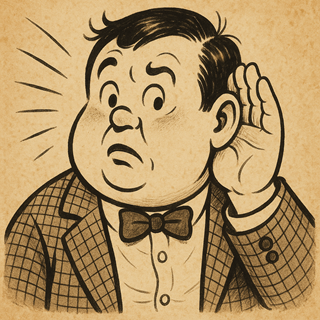Ever heard someone say
“tick tock,”
“woof woof,”
or…
“buzz”?

What’s That Sound?
That’s onomatopoeia —
words that sound like what they describe.
They’re the language of raindrops, giggles, footsteps, and even emotions.
But onomatopoeia isn’t just about sounds.
In some languages, it describes textures, feelings, and atmospheres — like the fluffiness of a pillow or the sparkle in someone’s eyes.
In short: onomatopoeia is:
sound + feeling + imagination

Every Culture Has Its Sound Words
While the word onomatopoeia comes from Greek, the idea exists everywhere.
Let’s travel around the world to see how different languages play with sounds
Japanese
Japanese may be one of the most onomatopoeia-rich languages in the world.
It doesn’t just imitate sounds — it mimics feelings, actions, weather, and even silence.
ふわふわ (fuwa fuwa) — fluffy
どきどき (doki doki) — heartbeat, excitement
ぴかぴか (pika pika) — something shiny or sparkling
Japanese uses repetition and rhythm to create rich emotional layers with sound words.
English
In English, onomatopoeia is often used in comics, poetry, and everyday expressions.
splash — water hitting something
clang — metal noise
murmur — soft speaking
giggle — a quiet laugh
English onomatopoeia often focuses on auditory sounds, like bangs and whispers.
Chinese (Mandarin)
Chinese also has a rich set of onomatopoeic expressions, often used in children’s books, comics, and daily conversation. Many are formed by repeating characters or mimicking real-world sounds.
咕噜咕噜 (gū lū gū lū) — bubbling, gurgling (like drinking or boiling)
叮咚 (dīng dōng) — ding dong (doorbell or bell sound)
喵喵 (miāo miāo) — meow meow (cat)
Chinese onomatopoeia often mirrors real sounds and is frequently used in storytelling, especially for action or nature scenes. The repetition of syllables adds a rhythmic and vivid quality.
Some Chinese sound words also serve as adverbs, describing how an action is done — similar to Japanese 擬態語.
For example:
静悄悄 (jìng qiāo qiāo) — quietly, silently
慢吞吞 (màn tūn tūn) — very slowly (dragging pace)
Korean
Korean is another sound-loving language, filled with expressive, rhythmic words.
멍멍 (meong-meong) — woof woof (dog)
반짝반짝 (banjjak banjjak) — twinkling
방긋방긋 (bang-geut bang-geut) — smiling brightly
Like Japanese, repetition is key, and sound words express emotions and visuals too.
Indonesian
Indonesian often uses word doubling to show repetition or intensity.
jalan-jalan — walk around, stroll
pelan-pelan — slowly
gedebak-gedebuk — clunky or heavy sounds
A fun and rhythmic approach to describing both sound and movement!
Others
Swahili: pap! (pop!), piga kelele (make noise)
French: dring dring (phone), hihi (laugh), plouf (splash)
Spanish: tic tac (clock), miau (meow), zas (swoosh or bang)

Types of Onomatopoeia
Onomatopoeia can be grouped by what they describe:
| Type | Description | Examples |
|---|---|---|
| Sound-based | Audible real-world sounds | buzz (EN), splash (EN), meow (EN), bang (EN) |
| Motion-based | Physical movement or rhythm | zoom (EN), shuffle (EN), click (EN) |
| Emotion-based | Feelings, mood, or internal state | doki doki (JP), hihi (FR) |
| Texture-based | Softness, stickiness, vibration | fuwa fuwa (JP), neba neba (JP) |
| Condition-based | Physical or environmental state | dara dara (JP), jime jime (JP) |
| Visual-based | Visual effects or impression | kira kira (JP), yura yura (JP) |
Why Onomatopoeia Matters
Easy to remember! — They sound like what they mean!
Cultural flavor! — Sound words reflect how people perceive the world
Expressive! — They add playfulness, color, and emotion to language
Universal fun! — Every language has them, even if they sound different
Welcome to the World of Sound Words
In this site, we gently guide you through the playful universe of Japanese sound words — and beyond.
Explore words like fuwa fuwa, doki doki, kira kira — and discover their cousins from around the world.
Let your ears, heart, and imagination lead the way.
Because sometimes, the best words don’t just describe the world…
They sound like it.

